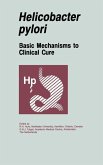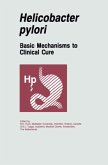Helicobacter pylori refers to a microaerophilic bacterium that is usually found in stomach. It is generally in the shape of a helix. Its shape is developed from penetrating the mucoid lining of the stomach. It is infectious and can cause chronic gastritis, gastric ulcers and duodenal ulcers. Helicobacter pylori infection does not have major visible symptoms except minor abdominal pains and nausea. Helicobacter pylori is also associated with a wide range of diseases such as atherosclerosis, alzheimer's disease, multiple sclerosis, coronary artery disease, periodontitis, parkinson's disease, Guillain-Barré syndrome, rosacea, psoriasis, chronic urticaria, etc. It is diagnosed using invasive and non-invasive methods. Invasive means include histological examination with endoscopic biopsy and rapid urease test. Non-invasive methods involve stool antigen tests, carbon urea breath test, etc. This book unfolds the unexplored aspects related to the epidemiology and management of helicobacter pylori infection. It also provides significant information on helicobacter pylori to help develop a good understanding of its treatment. The book is appropriate for students seeking detailed information in this area as well as for experts.
Hinweis: Dieser Artikel kann nur an eine deutsche Lieferadresse ausgeliefert werden.
Hinweis: Dieser Artikel kann nur an eine deutsche Lieferadresse ausgeliefert werden.








